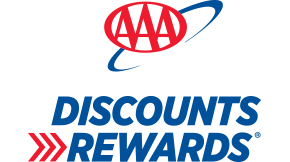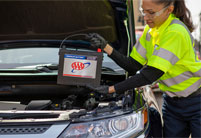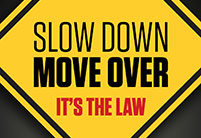From car seat, to booster, to seat belt
From car seat, to booster, to seat belt

When it comes to transporting your kids in a vehicle, the rules are clear: Children are required to use a child safety restraint until their eighth birthday. On the road to car seat-free riding, it's the parents job to implement important transitions that are key to a child's safety as they grow.
Age is an important milestone when graduating to a new child safety restraint, but height and weight requirements are the most critical criteria to follow. A poor-fitting car seat, whether too large or too small for the child - won't offer the intended protection and could lead to injury or worse.
According to the Center for Disease Control and Prevention, car seat use reduces the risk for injury in a crash by 71-82% for children, when compared with seat belt use alone.
Use the following guide to stay on point with car seat transitions as your child grows, and be sure to install your car seat according to the provided instructions. The Mayo Clinic provides tips on car seat installation mistakes to avoid.
Rear-Facing Seats
The rear-facing position supports a child’s head, neck, and spine and helps reduce stress to the neck and spinal cord in a crash. Children should ride in a vehicle’s back seat in rear-facing safety seats from birth until they reach their convertible seat’s upper weight limit, which should be around 35 pounds. Be sure both age and weight requirements are met before a child is moved to a forward-facing seat.
Forward-Facing Seats
Children can ride forward-facing in a vehicle’s back seat once they have reached the upper weight (30 to 35 pounds) or height limit of their rear-facing convertible seat, which will typically be around age 2. It is safest to keep your child in a forward-facing seat with a harness until he or she reaches the seat’s maximum height or weight (40 to 65 pounds) limits.
Forward-facing seats include an internal harness system that keeps a child properly restrained and snug straps that limit forward motion. In the event of a crash, the forward-facing position provides for even distribution of physical forces over a child’s body. Safety belts are designed for 165-pound male adults, so it’s no wonder that research shows poorly fitting adult belts can injure children.
Booster Seats

Children can use a booster seat when they have outgrown the weight or height limit of their forward-facing harnesses, which will be between 40 and 65 pounds. Children at this stage are not yet ready for adult safety belts and should use belt-positioning booster seats until they are at least 4’9″ and between 8 and 12 years old.
Seat Belt
When a child can sit with his or her back straight against the vehicle seat back cushion and knees bent over the seat edge without slouching, it is time to switch to an adult safety belt.
- The lap belt should fit the child low across the hips and thighs, not across the abdomen
- The shoulder belt fits across the collarbone and chest. It should not cut into a child’s abdomen or neck
- Children under age 16 should be properly restrained in the back seat
- Teenagers should wear lap and shoulder belts in every seating position in a motor vehicle
- ALWAYS require safety belt use for all passengers
Car Seats and Car Insurance
If you are involved in an accident, comprehensive and collision car insurance policies will typically cover the replacement of a car seat. Even if the car seat does not appear to be damaged, you may want to replace it depending on the manufacture's recommendations.
AAA supports families with car seat resources, including free car seat inspections at AAA branch offices. For more information, visit AAA.com/SafeSeats4Kids or schedule a car seat inspection in your area here.
Smart drivers make sure all of their passengers are safe and secure when driving. They also know the importance of securing car insurance they can trust. Insure your car with AAA Insurance today.












